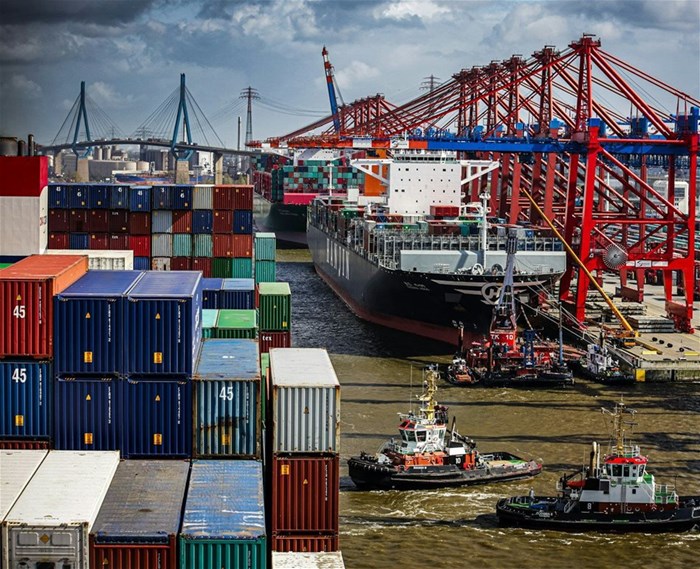SA's logistics sector set for transformation under new regulations

The regulations, which came into effect on 8 May 2025, provide a possible path for competitors, customers and suppliers involved in the rail, ports and road sector to collaborate to alleviate the challenges the sector is experiencing, without contravening the Competition Act 89 of 1998, as amended.
Objective of the regulations
The regulations aim to facilitate cooperation among market participants to address systemic inefficiencies and infrastructure challenges in South Africa’s transport and logistics sectors. Specifically, the regulations aim to:
- reduce costs, improve services, and minimise losses caused by operational inefficiencies and infrastructure capacity shortages;
- prevent, mitigate and resolve bottlenecks and operational breakdowns in port and rail infrastructure;
- contribute to measures aimed at resolving the challenges in the sector; and
- ensure security of supply of goods transported through South Africa’s ports, rails and key feeder road corridors.
Scope of the exemption
The regulations exempt specific categories of agreements and practices from the application of section 4 and 5(1) of the Competition Act, including the per se prohibitions on:
- fixing purchase price or trading conditions (excluding the fixing of a selling price) (Section 4(1)(b)(i))
- dividing markets by allocating customers, suppliers, territories or specific types of goods or services (Section 4(1)(b)(ii))
Categories of exempted conduct
The exemption enables coordination on ports and rail as well as key road corridors that feed this infrastructure.
Ports
- joint planning on port capacity and re-routing of cargo between ports
- traffic flow coordination into ports, including sharing operational data (eg, stack levels, weather disruptions)
- night operations coordination to ease peak-hour congestion
- joint repair, maintenance and development of port infrastructure and facilities
- collaboration on technical studies and assessments to enhance sector efficiency
- joint investment or funding initiatives for infrastructure upgrades
- shared use of independent consultants or technical experts
Users of a particular congested terminal in a port may, for example, exchange information on the volumes and delivery methods for cargo they export through that terminal. They might then agree to stagger their deliveries and shipments on a coordinated basis, in coordination with the terminal operator, to relieve congestion at peak times and create greater efficiencies in cargo exports from that terminal.
Rail
- joint management and upgrading of rail logistics infrastructure
- coordination on freight volumes to support dedicated rail services
- shared locomotive capacity
- reinstatement of services to strategic logistics nodes
- integrated rail-port planning to streamline cargo flow
- sector-focused collaborative studies
- joint infrastructure funding or investment
- shared procurement of independent advisory services
By way of example, a particular rail corridor may not be utilised to its full design capacity because of ongoing maintenance challenges, or a shortage of rolling stock, or both. In this case, some or all of the exporters who use that rail corridor to export dry bulk commodities, for example, can jointly agree to fund and procure any maintenance, infrastructure upgrades and/ or rolling stock required to ensure the line performs to design capacity.
This ensures that they each achieve their maximum export volumes. They might then agree with the network manager and rail transport provider that the funding is repaid over an agreed period of time by way of discounted tariffs from the rail transport provider.
Key feeder road corridors that interface with ports and rail (limited to roads that are key feeder corridors)
- joint maintenance and development of infrastructure
- sector-wide technical studies to improve efficiency
- shared investment in corridor upgrades
- procurement and sharing of technical experts or consultants
The relevant trucking industry bodies, for example, could agree jointly to commission and fund a technical study to reduce surface wear and congestion on a feeder road to a port.
Exclusions
The regulations specifically exclude the following conduct:
- any discussions/ agreements on fixing the selling price of goods/ services
- collusive tendering
- any agreement that forecloses third-party access to rail infrastructure (such as new entrants, small- and medium-sized enterprises and historically disadvantaged persons)
- any agreement or practice that conflicts with sector-specific legislation or policy
- resale price maintenance
- any merger transaction
Application and approval process
Firms seeking to rely on the exemption must submit a written request to the Commission for confirmation that the proposed conduct falls within the scope of the regulations. The Commission, after consultation with the relevant sector regulator and the Department of Trade, Industry and Competition, may:
- approve the exemption (with or without safeguards)
- decline the request if it falls outside the scope of the regulations
The Commission is required to issue a decision within 30 business days, extendable by an additional 30 business days. If no decision is issued within the prescribed period, the agreement or practice is deemed approved. The Commission retains discretion to determine the duration of each exemption.
Duration of the regulations
The regulations will remain in force for an initial period of 15 years, with the option of a further 15-year extension, although this does not necessarily mean that agreements contemplated under the regulations will be permitted to endure between firms for 15 years.
Upon withdrawal of the regulations, firms will be afforded a reasonable period to wind down any ongoing arrangements.
Providers of port and rail services as well as customers purchasing these services or other firms in the sector who wish to utilise the exemption, need to ensure that their proposed conduct falls within the scope of the regulations and is approved by the Commission prior to engaging in these collaborations in order to avoid any risk of prosecution by the Commission.
The exemption nevertheless creates a significant opportunity to rapidly improve and enhance efficiencies in the freight logistics sector. The various genres of exempt collaboration and cooperation present numerous opportunities for industry participants to be creative in their support of the logistics network for their greater good and that of the country as a whole.